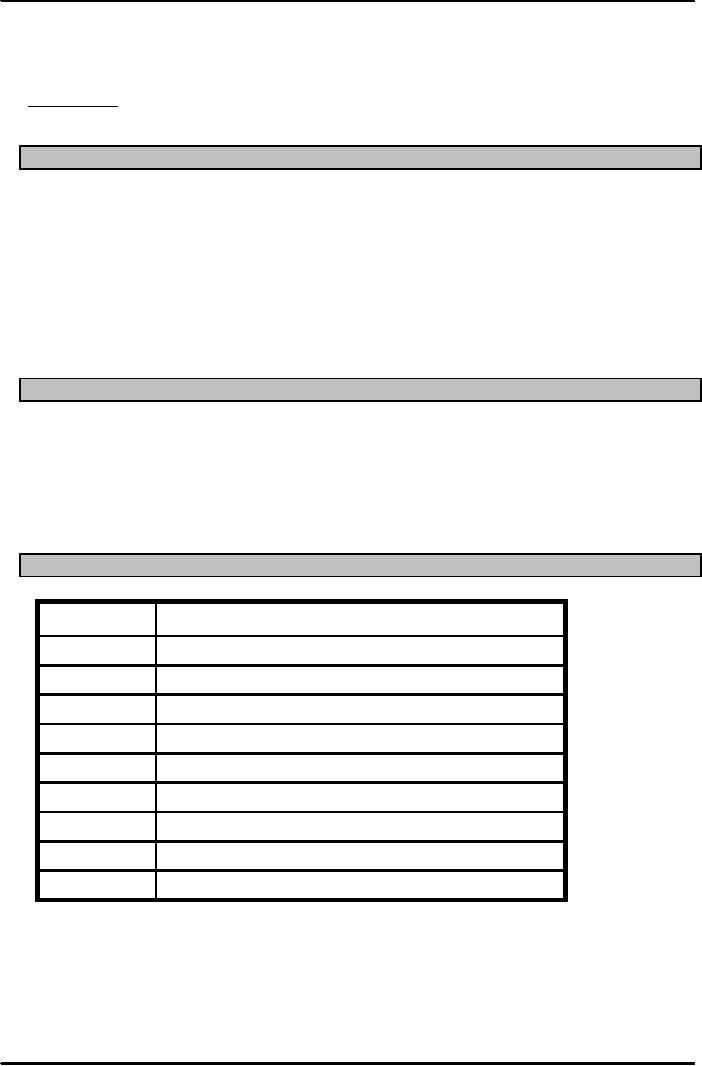 |

Production
and Operations Management
MGT613
VU
Lesson
39
SUPPLY
CHAIN MANAGEMENT
Supply
Chain: The
sequence of organization's facilities,
functions, and activities
that are involved in
producing
and delivering a product or
service.
Need
for Supply Chain
Management
1.
Improve
operations
2.
Increasing
levels of outsourcing
3.
Increasing
transportation costs
4.
Competitive
pressures
5.
Increasing
globalization
6.
Increasing
importance of e-commerce
7.
Complexity
of supply chains
8.
Manage
inventories
Benefits
of Supply Chain
Management
1.
Lower
inventories
2.
Higher
productivity
3.
Greater
agility
4.
Shorter
lead times
5.
Higher
profits
6.
Greater
customer loyalty
Elements
of Supply Chain
Management
Element
Typical
Issues
Customers
Determining
what customers want
Forecasting
Predicting
quantity and timing of
demand
Incorporating
customer wants, mfg., and
time
Design
Processing
Controlling
quality, scheduling work
Inventory
Meeting
demand while managing
inventory costs
Purchasing
Evaluating
suppliers and supporting
operations
Suppliers
Monitoring
supplier quality, delivery, and
relations
Location
Determining
location of facilities
Logistics
Deciding
how to best move and store
materials
177

Production
and Operations Management
MGT613
VU
Logistics
The
goal of logistic work is to
manage the completion of project
life cycles, supply chains
and
resultant
efficiencies. Often Logistics is termed
as the art and science of
managing and controlling
the
flow of goods, energy, information and
other resources like products,
services, and people,
from
the
source of production to the
marketplace.
It
also refers to the movement of materials and
information within a facility and to
incoming and
outgoing
shipments of goods and materials in a
supply chain.
Logistics
is the time related positioning of
resources and is commonly
seen as a branch of
engineering
which creates "people
systems" rather than
"machine systems. It involves
the
integration
of information, transportation,
inventory, warehousing, material
handling, and
packaging.
.
Important
Characteristics of Logistics
1.
Movement
within the facility
2.
Bar
coding
3.
Incoming
and outgoing shipments
4.
EDI
(Electronic Data Interchange)
5.
Distribution
6.
JIT
Deliveries
Logistics:
Evaluating Shipping
Alternatives
A
situation that arises
frequently in some businesses in
making a choice between quicker(
expensive)
shipping alternatives such as
overnight or 2 day air and
slower but cheaper
alternatives.
The decision in such cases
often focuses on the cost
savings of alternatives
versus
the increased holding cost
that result from using
slower alternative.
Often
the supplier gets paid on
delivery of the product through
EDI the very same time
the
order
reaches its
destination.
The
Incremental Holding cost
incurred by using the slower
alternative is computed as
follows:
Incremental
Holding Cost= H (
d/365)
Where
H=Annual Holding cost for
the item.
d
= Time savings in days and
d/365 is fraction of year
saved.
Logistics
Example
Determine
the shipping alternative ( with in
Pakistan) for a Karachi based
Montessori toy
manufacturer,1
days or 5 days are best
when the holding cost of the
item is Rs. 100,000 per year
and
the
1 day shipping cost is Rs
1500. and 3 day shipping
cost is
Rs.
600
Rs.
500
178

Production
and Operations Management
MGT613
VU
Solution
H=
Rs. 100,000 per year
Time
savings = 2 days using 1 day
alternative
Holding
cost for additional 2
days
=
100,000 X ( 2/365)
=
Rs. 547.95=548.
Or
Holding cost per day = Rs.
274
Alternative
A
Cost
savings = Rs. (1500-600)= Rs.
900, because the actual cost of savings
of Rs 900 is more than
the
holding cost of Rs. 548,
use the 3 day option.
Cost
savings = Rs. (1500-500)= Rs.
1000, because the actual cost of savings
of Rs 1000 is greater
than
the holding cost of Rs.548,
use the 3 day option.
Distribution
Requirements Planning
Distribution
requirements planning (DRP) is a system
for inventory management and
distribution
planning.
Extends the concepts of MRPII.
Uses
of DRP
Management
uses DRP to plan and
coordinate:
1.
Transportation
2.
Warehousing
3.
Workers
4.
Equipment
5.
Financial
flows
Electronic
Data Interchange
EDI
is the direct transmission of inter-organizational
transactions, computer-to-computer,
including
purchase
orders, shipping notices, and debit or
credit memos.
Electronic
Data Interchange gives an organization
the following benefits and
advantages.
1.
Increased
productivity
2.
Reduction
of paperwork
3.
Lead
time and inventory
reduction
4.
Facilitation
of just-in-time systems
5.
Electronic
transfer of funds
6.
Improved
control of operations
7.
Reduction
in clerical labor
8.
Increased
accuracy
179

Production
and Operations Management
MGT613
VU
Efficient
Consumer Response
Efficient
consumer response (ECR) is a
supply chain management
initiative specific to the
food
industry.
ECR reflects companies' efforts to achieve
quick response using EDI and
bar codes.
E-Commerce:
is the use of electronic technology to
facilitate business transactions.
Successful
Supply Chain
1.
Trust
among trading partners
2.
Effective
communications
3.
Supply
chain visibility
4.
Event-management
capability
a.
The ability to detect and
respond to unplanned
events
5.
Performance metrics
Summary
Supply
Chain Management is primarily the
flow of information which
ensures the effective flow
of
materials
throughout the value chain.
The chain extends from the
Suppliers to the organization and
from
the
organization to the customers. Operations
Managers should be able to
identify that the strength of
the
Supply Chain is the strength of its
weakest link. If an organization
fails to make use of the
customer
feed
back it not only looses its
customer base but also
weakens its supply chain and
loses its business to
its
customers. Suppliers normally
come at the upstream of the organization
and customers at the
downstream
to complete the Supply Chain. Many
Software are available to
ensure that Supply chain
is
managed
effectively by the organization. Supply
Chain Management is now
gaining popularity in
Pakistan.
180
Table of Contents:
- INTRODUCTION TO PRODUCTION AND OPERATIONS MANAGEMENT
- INTRODUCTION TO PRODUCTION AND OPERATIONS MANAGEMENT:Decision Making
- INTRODUCTION TO PRODUCTION AND OPERATIONS MANAGEMENT:Strategy
- INTRODUCTION TO PRODUCTION AND OPERATIONS MANAGEMENT:Service Delivery System
- INTRODUCTION TO PRODUCTION AND OPERATIONS MANAGEMENT:Productivity
- INTRODUCTION TO PRODUCTION AND OPERATIONS MANAGEMENT:The Decision Process
- INTRODUCTION TO PRODUCTION AND OPERATIONS MANAGEMENT:Demand Management
- Roadmap to the Lecture:Fundamental Types of Forecasts, Finer Classification of Forecasts
- Time Series Forecasts:Techniques for Averaging, Simple Moving Average Solution
- The formula for the moving average is:Exponential Smoothing Model, Common Nonlinear Trends
- The formula for the moving average is:Major factors in design strategy
- The formula for the moving average is:Standardization, Mass Customization
- The formula for the moving average is:DESIGN STRATEGIES
- The formula for the moving average is:Measuring Reliability, AVAILABILITY
- The formula for the moving average is:Learning Objectives, Capacity Planning
- The formula for the moving average is:Efficiency and Utilization, Evaluating Alternatives
- The formula for the moving average is:Evaluating Alternatives, Financial Analysis
- PROCESS SELECTION:Types of Operation, Intermittent Processing
- PROCESS SELECTION:Basic Layout Types, Advantages of Product Layout
- PROCESS SELECTION:Cellular Layouts, Facilities Layouts, Importance of Layout Decisions
- DESIGN OF WORK SYSTEMS:Job Design, Specialization, Methods Analysis
- LOCATION PLANNING AND ANALYSIS:MANAGING GLOBAL OPERATIONS, Regional Factors
- MANAGEMENT OF QUALITY:Dimensions of Quality, Examples of Service Quality
- SERVICE QUALITY:Moments of Truth, Perceived Service Quality, Service Gap Analysis
- TOTAL QUALITY MANAGEMENT:Determinants of Quality, Responsibility for Quality
- TQM QUALITY:Six Sigma Team, PROCESS IMPROVEMENT
- QUALITY CONTROL & QUALITY ASSURANCE:INSPECTION, Control Chart
- ACCEPTANCE SAMPLING:CHOOSING A PLAN, CONSUMER’S AND PRODUCER’S RISK
- AGGREGATE PLANNING:Demand and Capacity Options
- AGGREGATE PLANNING:Aggregate Planning Relationships, Master Scheduling
- INVENTORY MANAGEMENT:Objective of Inventory Control, Inventory Counting Systems
- INVENTORY MANAGEMENT:ABC Classification System, Cycle Counting
- INVENTORY MANAGEMENT:Economic Production Quantity Assumptions
- INVENTORY MANAGEMENT:Independent and Dependent Demand
- INVENTORY MANAGEMENT:Capacity Planning, Manufacturing Resource Planning
- JUST IN TIME PRODUCTION SYSTEMS:Organizational and Operational Strategies
- JUST IN TIME PRODUCTION SYSTEMS:Operational Benefits, Kanban Formula
- JUST IN TIME PRODUCTION SYSTEMS:Secondary Goals, Tiered Supplier Network
- SUPPLY CHAIN MANAGEMENT:Logistics, Distribution Requirements Planning
- SUPPLY CHAIN MANAGEMENT:Supply Chain Benefits and Drawbacks
- SCHEDULING:High-Volume Systems, Load Chart, Hungarian Method
- SEQUENCING:Assumptions to Priority Rules, Scheduling Service Operations
- PROJECT MANAGEMENT:Project Life Cycle, Work Breakdown Structure
- PROJECT MANAGEMENT:Computing Algorithm, Project Crashing, Risk Management
- Waiting Lines:Queuing Analysis, System Characteristics, Priority Model